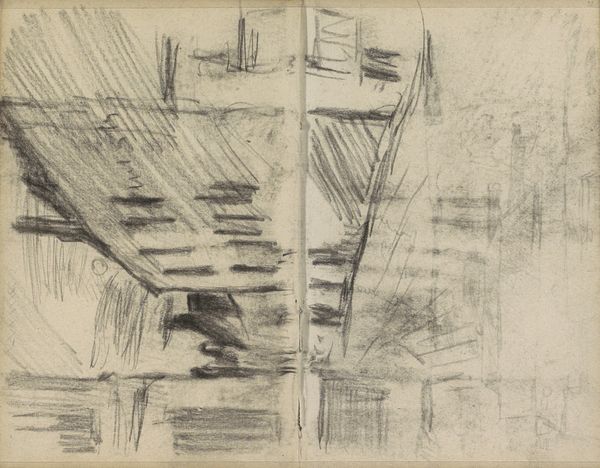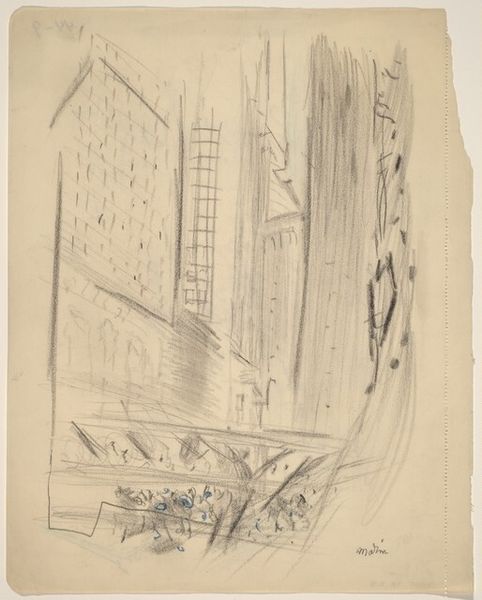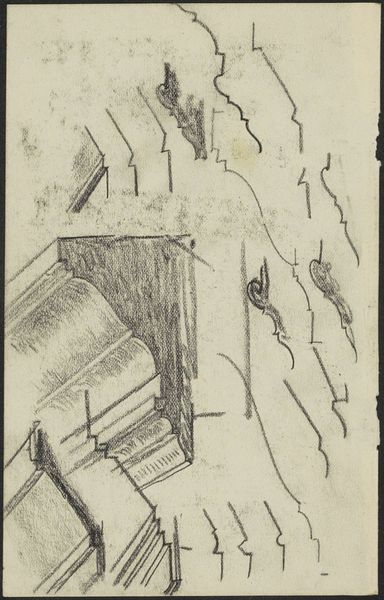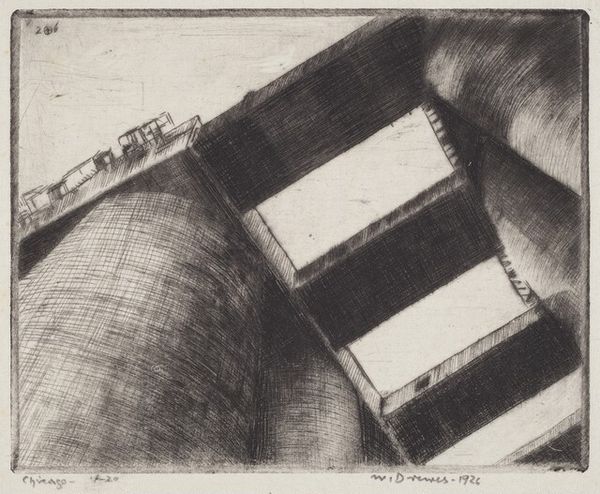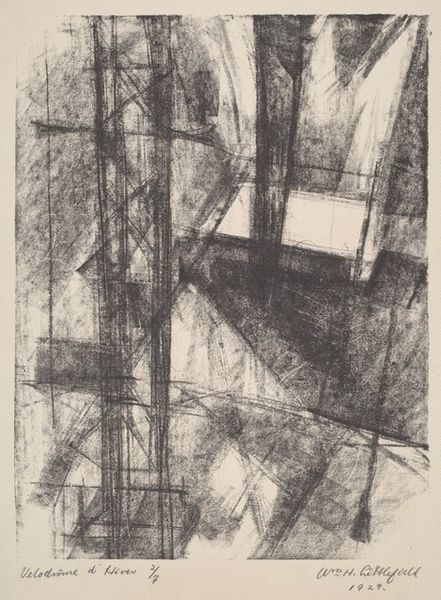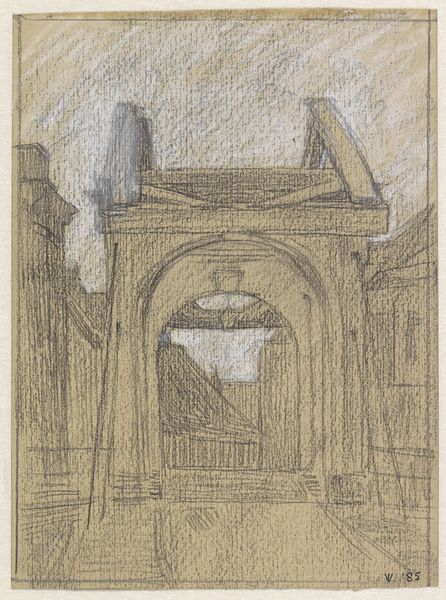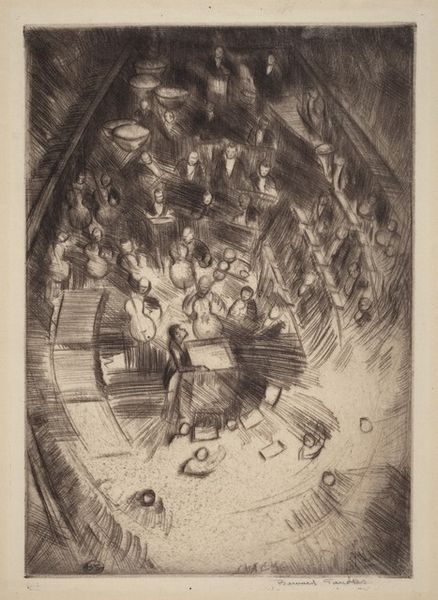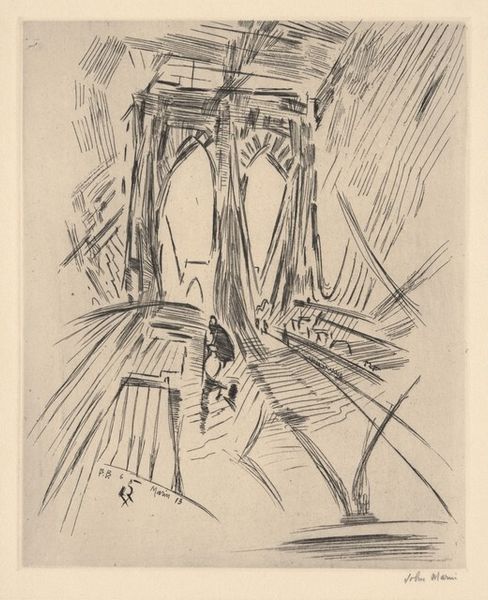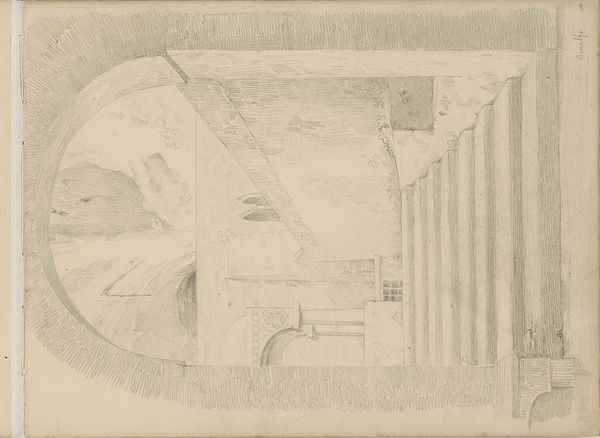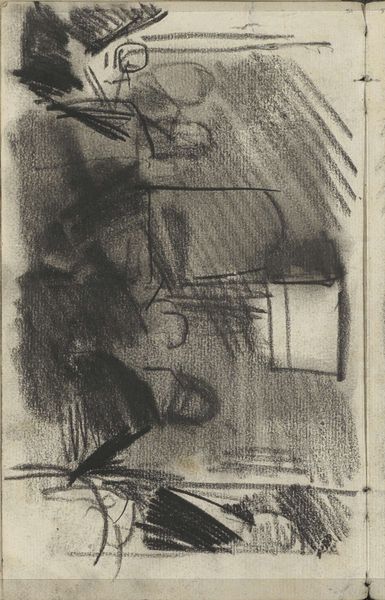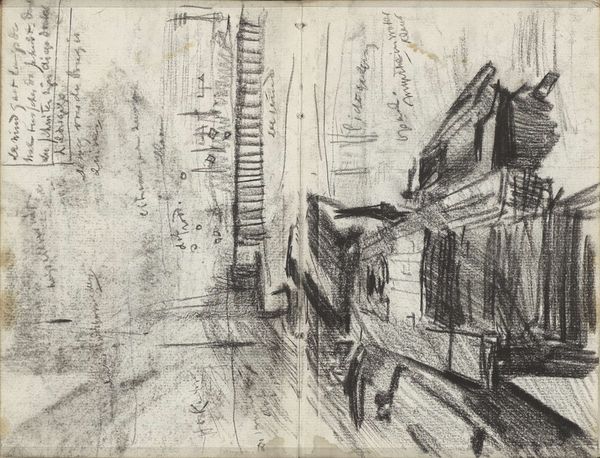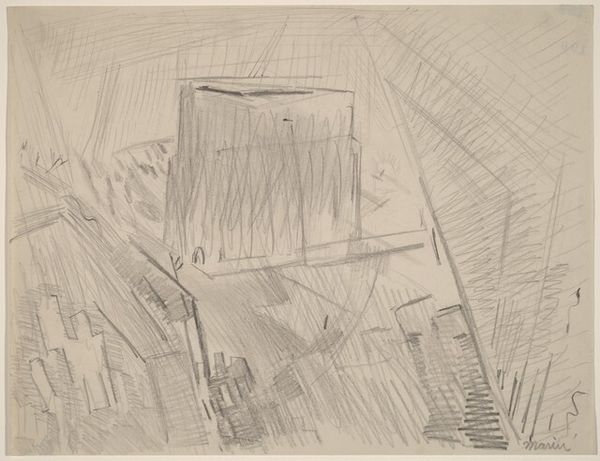
drawing, pencil
#
drawing
#
pencil drawing
#
geometric
#
pencil
#
line
Dimensions: height 250 mm, width 365 mm
Copyright: Rijks Museum: Open Domain
Editor: Here we have "Part of a Machine with Three Gears" by Carel Adolph Lion Cachet, dating from 1874 to 1945. It's a pencil drawing. The sketchiness gives it an unfinished, almost ghostly, quality. What strikes you about this piece? Curator: The immediate impact is the raw visibility of the artistic process. Cachet isn’t trying to disguise the labor, the sheer materiality of graphite on paper. We see the lines, the erasures perhaps. This challenges conventional notions of art being detached from its making. I'm interested in the specific mechanical context here: What kind of machine, what purpose? The drawing gives insight into how industrial processes were perceived. Editor: That makes sense. It's not romanticizing the machine, but showing the mechanics themselves. The line work feels quite analytical. So how does Cachet’s choice of material, just a simple pencil, affect our understanding? Curator: The use of pencil democratizes the image. It brings the industrial into the realm of the accessible, suggesting perhaps, that technology is something that can be understood, even controlled. Consider the socio-economic implications: who had access to these machines? What labor conditions surrounded their operation? Cachet isn't simply depicting cogs; he’s hinting at the systems, power dynamics, and labor implicit within their production and usage. The drawing serves as a visual document reflecting and refracting industrial development and how it shaped the world around it. Editor: That's a fantastic point. I was seeing gears; you're pointing out the gears in a system! Curator: Exactly. The point is that Cachet invites us to consider these everyday technologies not as abstract concepts, but as the products of human labor. We should interrogate their origin, material constitution, and socio-political influence. Editor: Thank you! I definitely see this artwork, and Cachet's intentions, in a whole new light. Curator: And I was reminded to consider the artist's relationship to the rapidly industrializing world of their time, and what medium was available to engage.
Comments
No comments
Be the first to comment and join the conversation on the ultimate creative platform.
